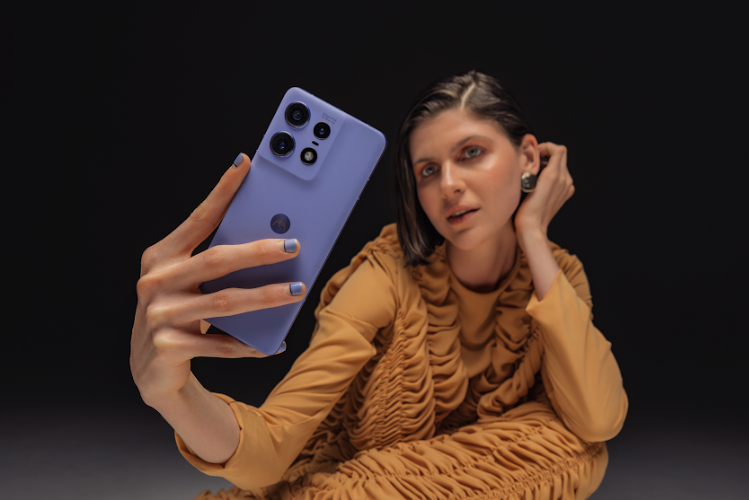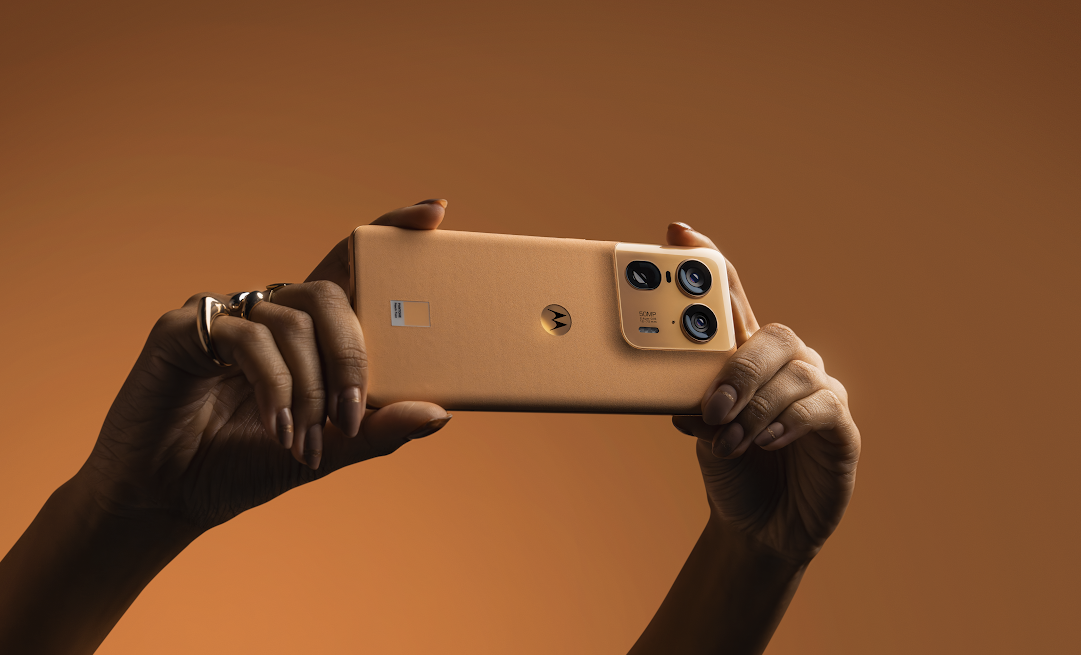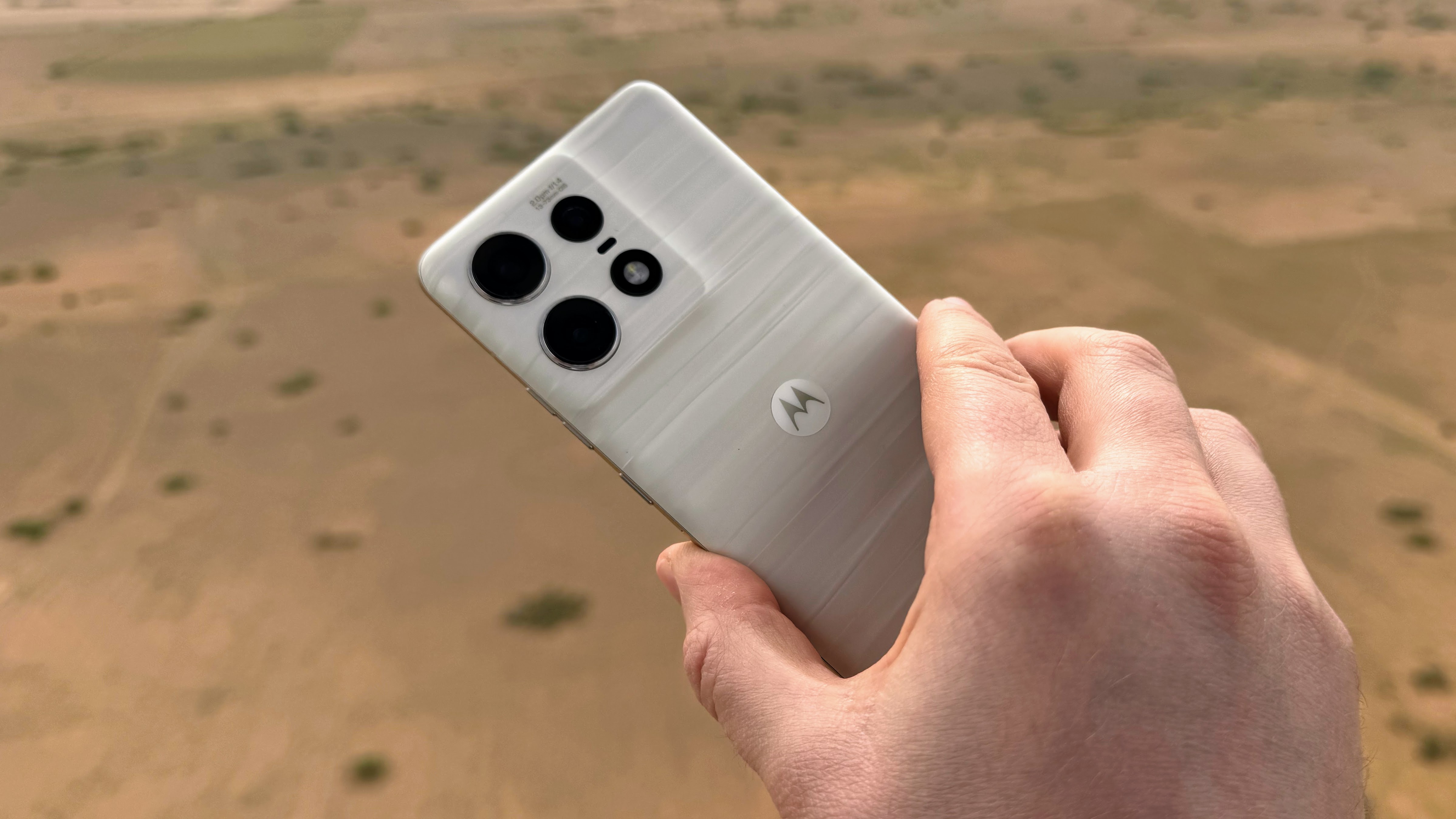Motorola has launched a trio of new phones to lead its smartphone range: the Moto Edge 50 Fusion, the Moto Edge 50 Pro and the Moto Edge 50 Ultra.
With a combination of specs that cover the upper and lower-ends of the mid-range phone arena, Motorola’s new Edge 50 series looks set to challenge models found among the best cheap phones, in addition to snapping at the heels of some of the best phones – notably the likes of the Google Pixel 8.
Starting with the entry-level Moto Edge 50 Fusion, this £349 / €399 (we don’t have pricing for other regions yet) phone comes with a 6.7-inch Full HD+ pOLED 144Hz refresh rate display, a Qualcomm Snapdragon 7s Gen 2 chipset matched with 8GB or 12GB of LPDDR4X RAM, and UFS 2.2 storage options of 128GB, 256GB and 512GB.
Charging comes in at a speedy 65 watts when wired, with the battery capacity rated at 5,000mAh. The rear camera array is made up of a 50MP main camera with optical image stabilization, and a 13MP ultra-wide camera with a 120-degree field-of-vision. The front-facing camera comes in at 32MP.
All in all, those are fair if not exactly standout specs for an affordable Android 14 phone. But to help the Moto Edge 50 Fusion stand out is a trio of colors: Forest Blue and the pastel-like Marshmallow Blue both in vegan leather, and a vegan suede finish in Hot Pink.
Going Pro
Coming in at £599 / €699, the Moto Edge 50 Pro makes a play for the higher-end of mid-range phones. It sports a 6.7-inch 144Hz pOLED display with a ”Super HD resolution” and HDR10+ certification, a Snapdragon 7 Gen 3 chip, up to 12GB of RAM and 512GB of storage. There’s 125W ‘TurboPower’ rapid wired charging for quick refueling and 50W TurboPower wireless charging for the 4,500mAH battery.
On the camera side, there are three rear lenses, with the main one sporting a 50MP sensor complete with optical image stabilization, laser autofocus, and a 3-in-1 light sensor. The second camera has the 13MP ultrawide of the Fusion. But unlike the cheaper phone, the Edge 50 Pro comes with a 10MP 3x optical zoom telephoto camera with OIS (optical image stabilization). Flip the phone around and you’ll be greeted by a 50MP front-facing camera.

Again, these are all specs one might expect from a phone at this price point. But the Edge 50 Pro arguably offers something neat in the form of two vegan leather-backed modes in ‘Luxe Lavender’ or ‘Black Beauty’ – basically a light purple and black respectively – and a ‘Moonlight Pearl’ marble polymer option, which either looks sophisticated or kitsch depending on your tastes.
Ultra flair
Topping out the trio of Edge 50 phones is the Moto Edge 50 Ultra. This £849 / €999 Android phone arguably has the Google Pixel 8 Pro in its sights, by taking a lot of the Edge 50 Pro but adding in a Snapdragon 8s Gen 3 chip, 16GB of RAM and 1TB of storage.
The Moto 50 Ultra’s main camera is a 50MP snapper like that of the Pro phone, but has slightly bigger pixels. It also makes use of a 50MP ultra-wide camera with larger pixels, and a 64MP telephoto camera with a 3x optical zoom. The front-facing camera has a 50MP sensor for people who love clear video calls and snapping selfies.

In terms of standout design, the back of the Moto 50 Ultra can be bought in vegan leather in the Pantone colors of Peach Fuzz and Forest Grey, with a ‘Nordic Wood’ option to offer a dose of natural materials to the Ultra phone.
Style and smarts
Speaking of Pantone, the cameras and displays of these three phones have been developed with help from the color-centric organization to help capture and display images with accurate colors and skin tones.

All three phones come with IP68 water and dust resistance, and have access to ‘Moto AI’ features that help the cameras with things like autofocusing and capturing motion, in addition to generating themes and wallpapers for the phones, and aiding in navigation and search queries. And with Google Photos being used as the default photo app for the phones, the Edge 50 series can all tap into the smart editing features including Magic Editor, Magic Eraser, Photo Unblur.
Finally, the phones have the redesigned Hello UX user interface built on Android 14. This brings in more personalization options, slicker gesture control and better security features, including the ability to set up a safe space for kids to use the phone with limited access to apps. But all of this is a relatively light touch over Android 14, meaning Google’s software design and features are still given room to shine.
First impressions
I got a closer look at the phones in person at a Motorola media event and came away quietly impressed. There’s both a playfulness and clear vision in the phones’ design, offering mid-range phones that, to my eyes at least, offer something a little different to the rather run-of-the-mill phones one gets in this segment of the mobile market.
The Moto Edge 50 Pro was the phone I spent the most time with, and it’s the model I feel threads the line neatly between specs, features and price. The Edge 50 Ultra has some flagship-chasing features but I feel its price is a tad too high and it’ll need to bring something special to the table in everyday use to take on the likes of the Pixel 8 Pro and OnePlus 12.
The Edge 50 Fusion didn’t grab my imagination in terms of specs and features, but its neat design and colors, combined with a friendly price tag, could make it a solid contender for entry-level mid-range phones, appealing to people who want a little more phone than cheaper options typically offer without paying much more.
Availability of the Moto Edge 50 series starts from today (April 16) with the Edge 50 Pro and runs into mid-May with the other models. But we’ll need to put these phones through their paces before we decide if they are new contenders in the mobile market and can help see Motorola once again rise to the prominence it had in the early 2000s.
